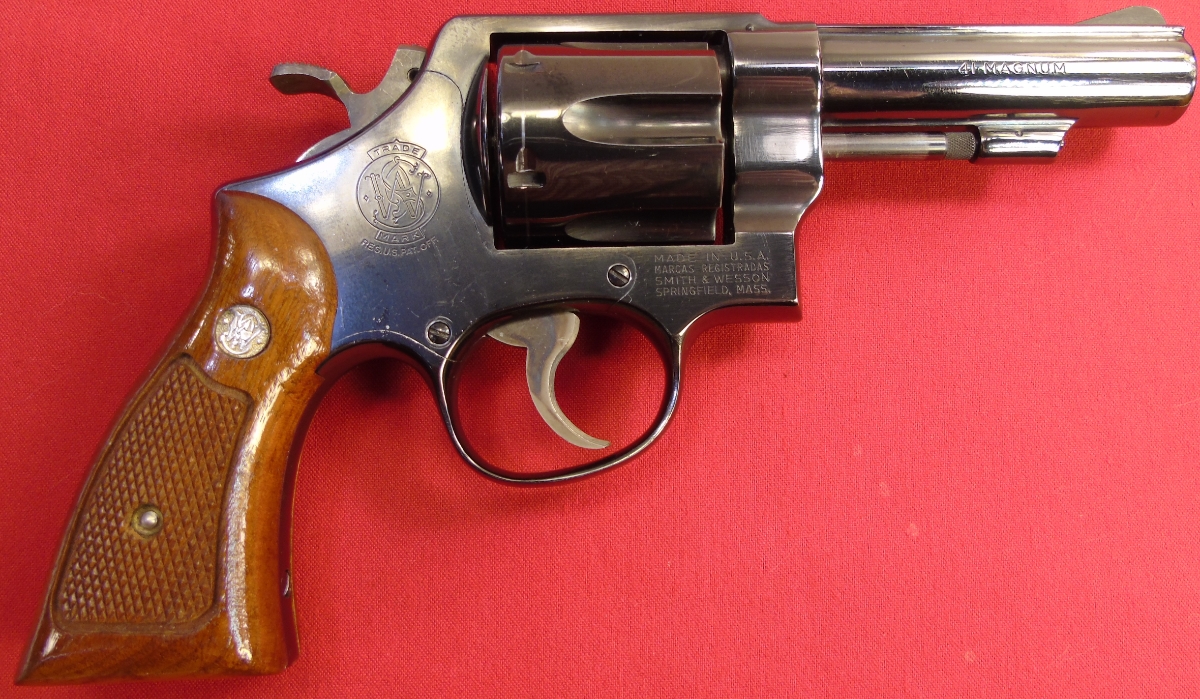
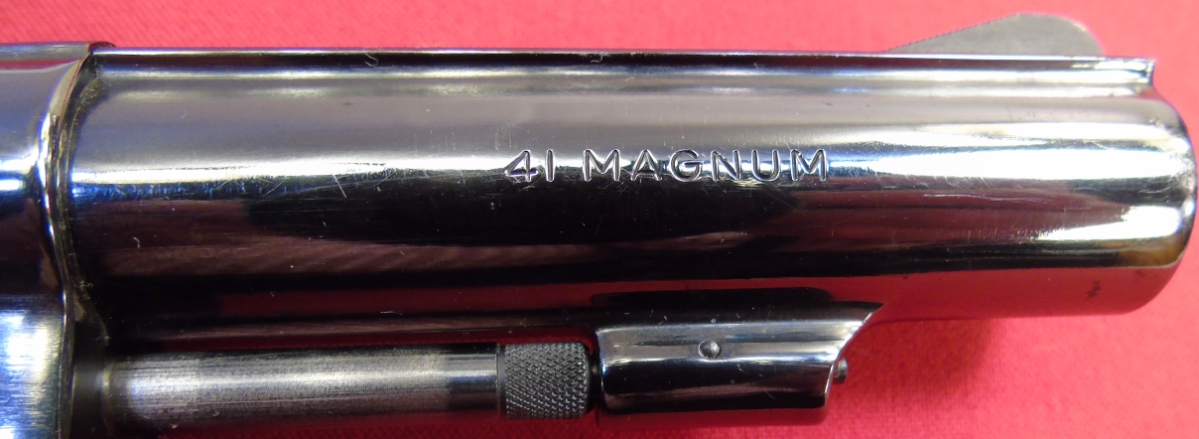
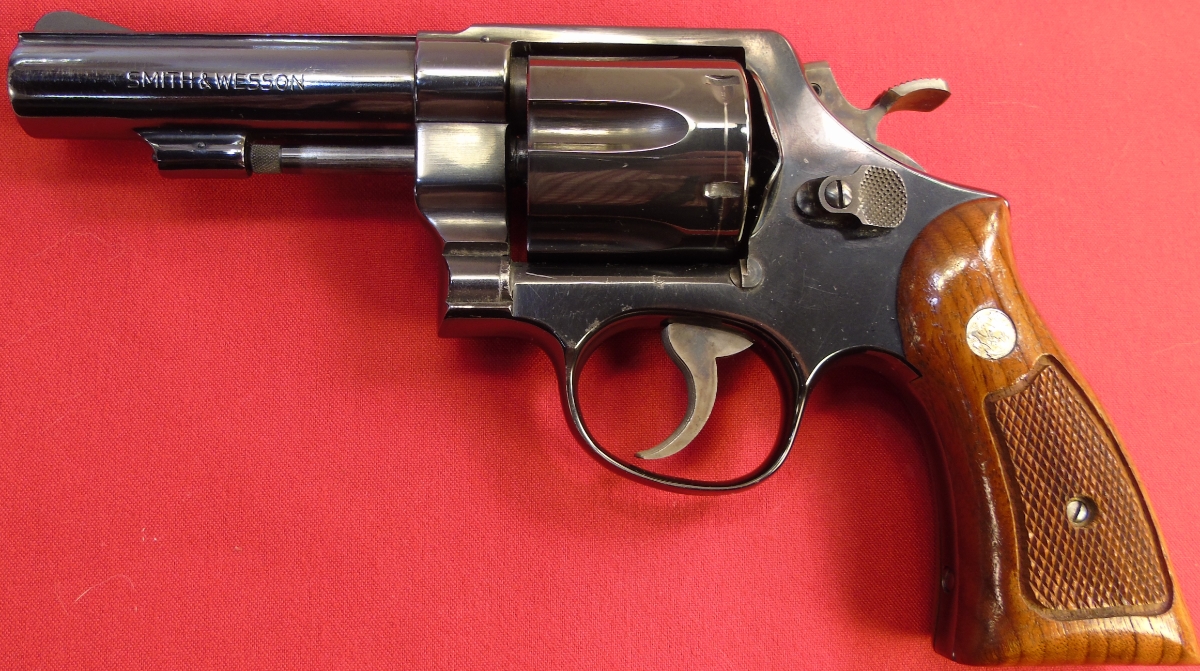
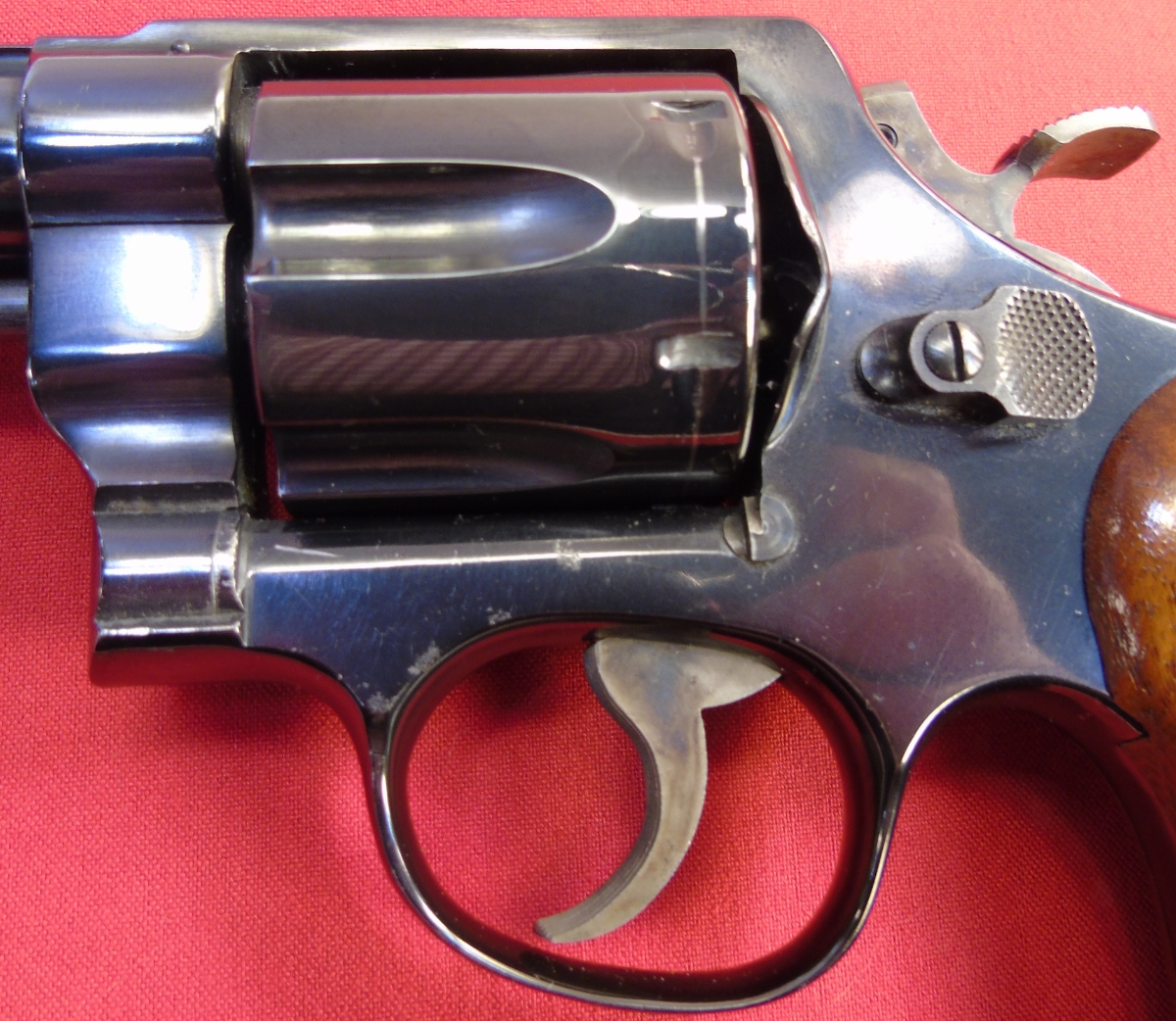
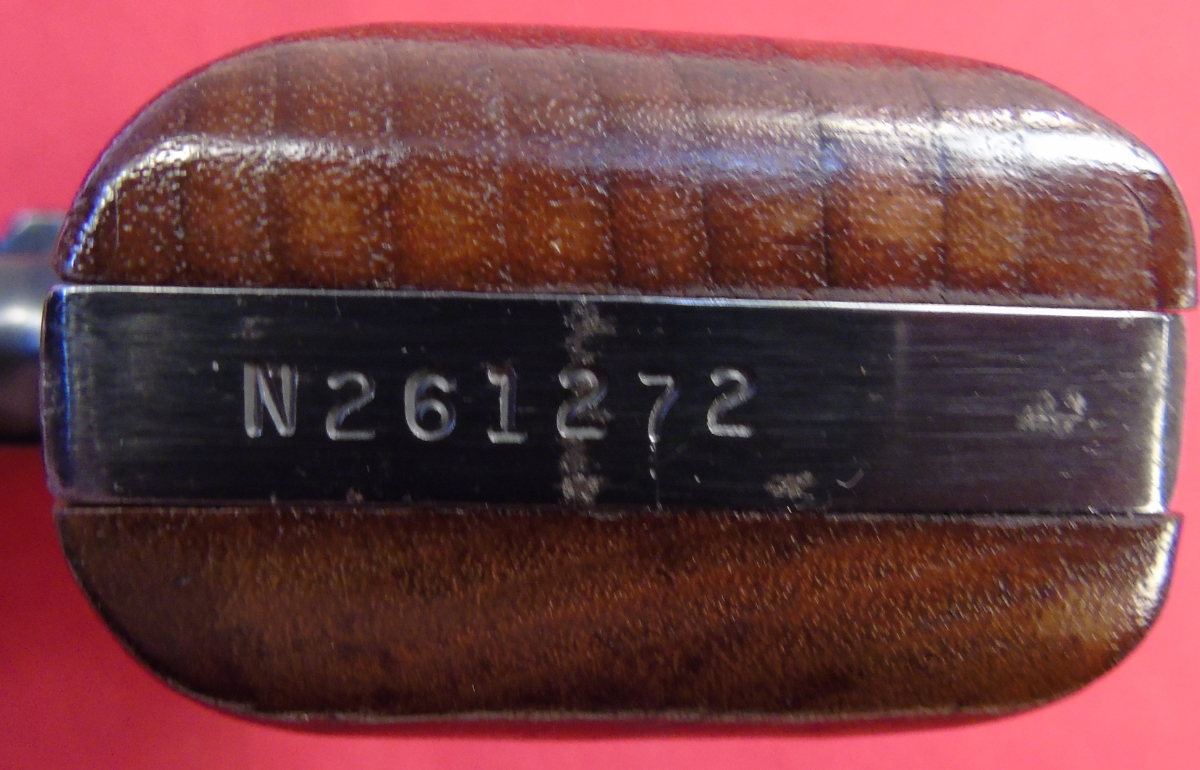
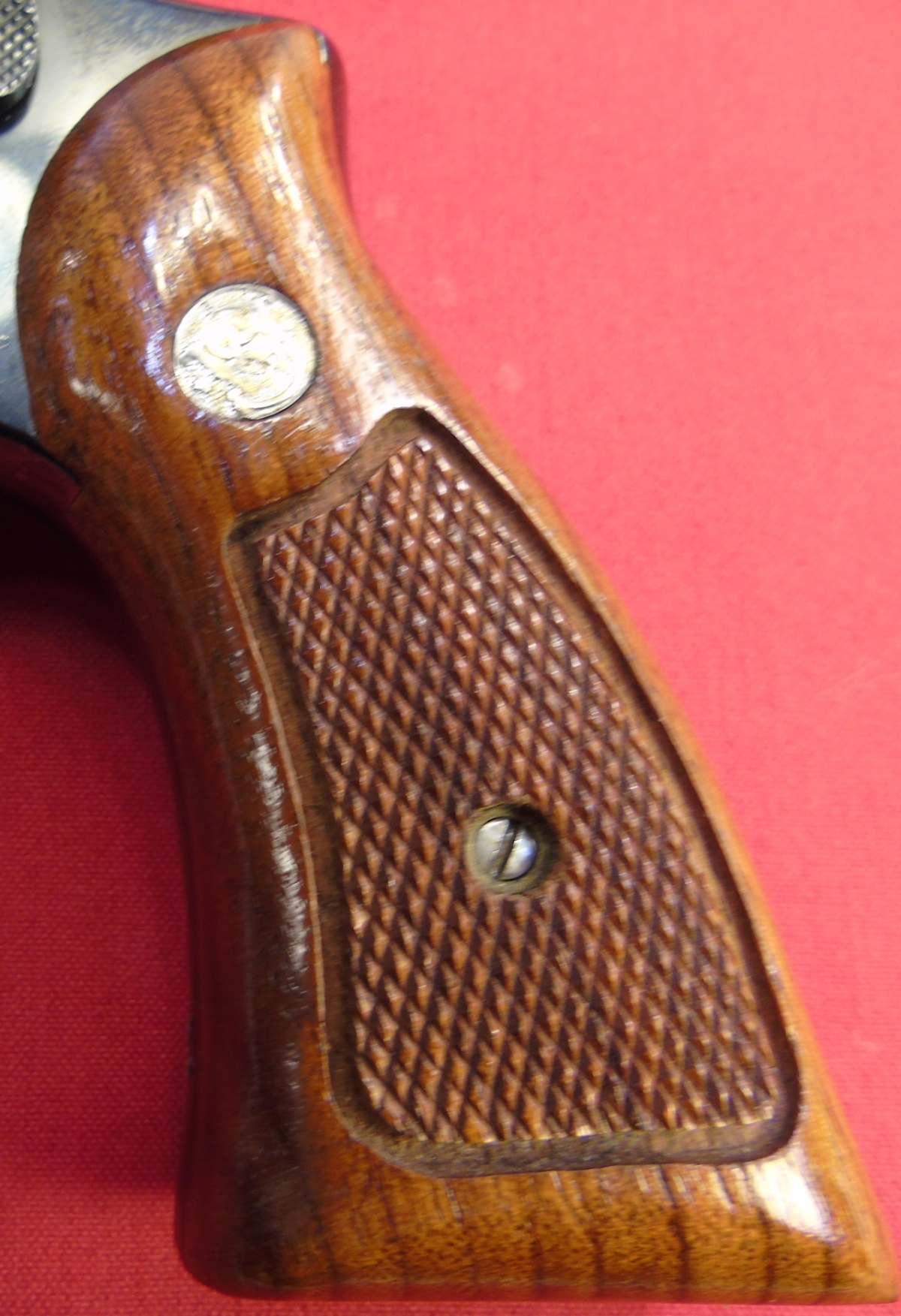
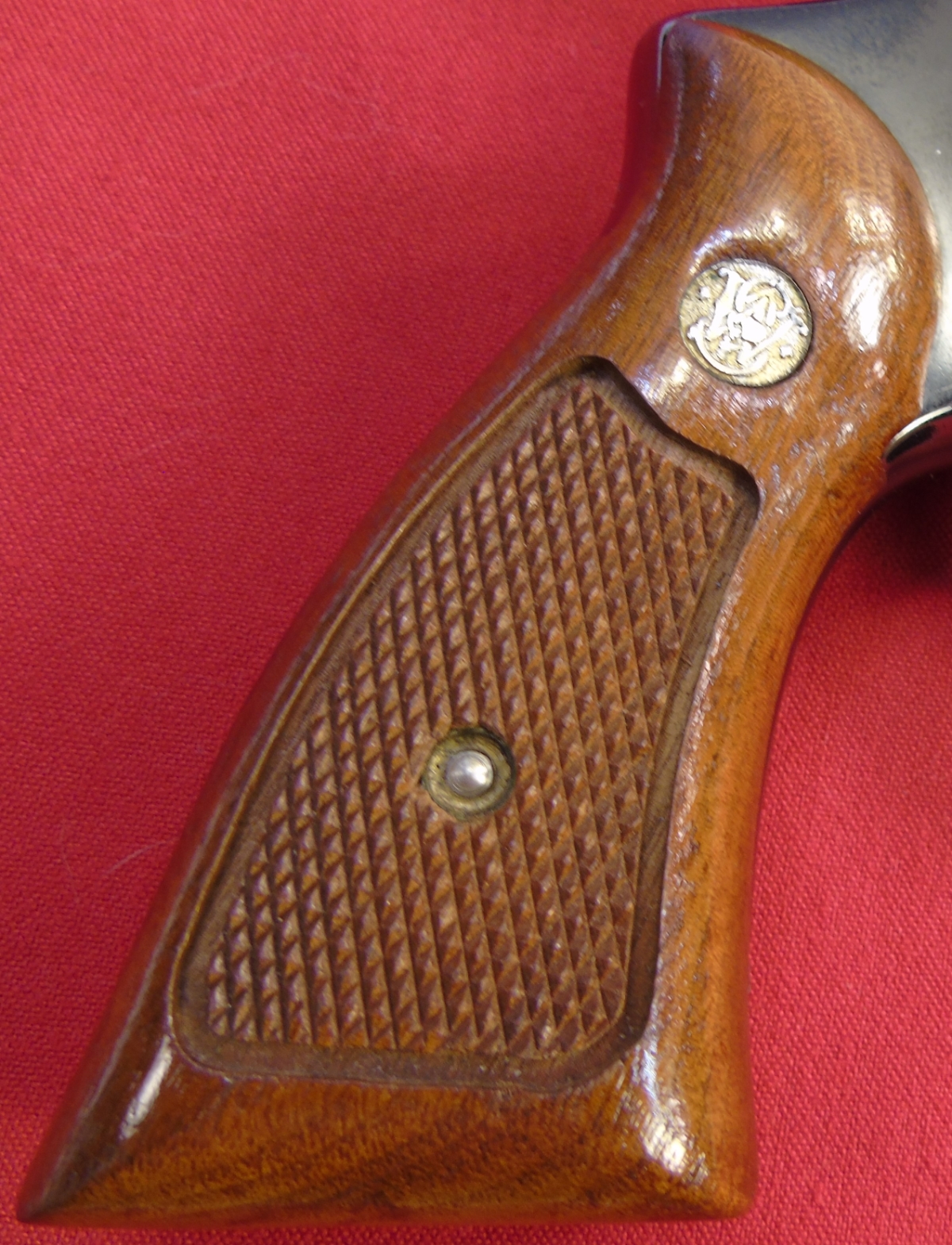
.41 Remington Magnum
| .41 Remington Magnum | ||||||||||||||||||||
|---|---|---|---|---|---|---|---|---|---|---|---|---|---|---|---|---|---|---|---|---|
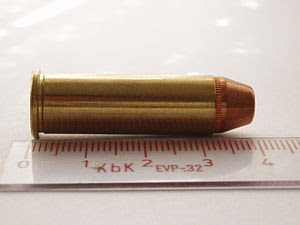 |
||||||||||||||||||||
| Type | Revolver | |||||||||||||||||||
| Place of origin | ||||||||||||||||||||
| Production history | ||||||||||||||||||||
| Designer | Elmer Keith / Bill Jordan | |||||||||||||||||||
| Designed | 1964 | |||||||||||||||||||
| Manufacturer | Remington Arms | |||||||||||||||||||
| Specifications | ||||||||||||||||||||
| Case type | Rimmed, straight | |||||||||||||||||||
| Bullet diameter | .410 in (10.4 mm) | |||||||||||||||||||
| Neck diameter | .434 in (11.0 mm) | |||||||||||||||||||
| Base diameter | .434 in (11.0 mm) | |||||||||||||||||||
| Rim diameter | .492 in (12.5 mm) | |||||||||||||||||||
| Rim thickness | .060 in (1.5 mm) | |||||||||||||||||||
| Case length | 1.290 in (32.8 mm) | |||||||||||||||||||
| Overall length | 1.590 in (40.4 mm) | |||||||||||||||||||
| Case capacity | 34 gr H2O (2.2 cm3) | |||||||||||||||||||
| Rifling twist | 1-18½ in | |||||||||||||||||||
| Primer type | Large pistol | |||||||||||||||||||
| Ballistic performance | ||||||||||||||||||||
|
||||||||||||||||||||
| Test barrel length: 6.5″ Revolver | ||||||||||||||||||||
The .41 Remington Magnum is a center fire firearms cartridgeprimari
Development
In 1963, Elmer Keith and Bill Jordan, with some help from Skeeter Skelton, petitioned Smith & Wesson, Remington, and Norma to produce a pistol and ammunition in .41 caliber which would fall between the extant .357 Magnum and .44 Magnum cartridges in ballistic performance, and at the same time address perceived shortcomings with those loads.[1]
While Keith had suggested a softer .41 Special cartridge as early as 1955, this idea was passed over in favor of the Magnum option, and the Special survives only as a custom wildcat cartridge.[2]
The .357 Magnum suffered from restricted terminal ballisticeffectiveness in the early 1960s, as jacketed hollow point bullets were not yet commonly available, and the manufacturer’s standard loadings consisted of simple lead bullets.
The powerful .44 Magnum, primarily a heavy hunting round, was considered overkill for police
Keith’s original vision called for dual power levels in the .41, a heavy magnum load pushing a 210-grain (14 g) JHP at a muzzle velocityof 1300–1400 feet per second (ft/s), and a milder police loading which was to send a 200-grain (13 g) semiwadcutter downrange at around 900 ft/s.[1][3]
These plans went awry due to an ongoing fascination in the firearms community with high-powered cartridges; Remington was swayed by this community’s influence and instead of following Keith’s blueprint chose to emphasize the performance of the new cartridge.
As a result, the .41 “Magnum” load was released at an advertised 1500 ft/s, and even the “light” police loading was introduced with a 210 grain lead semiwadcutter “warmed up” to about 1,150 ft/s. Unfortunately, the police load as delivered was regarded as overpowered by most law enforcement agencies, many of whom were still using .38 Special revolvers.[1][3]
Additionally, Smith & Wesson simply adapted their large N-frame revolvers for the new cartridge, which did not address size and weight concerns.[1][4]
The Model 58, targeted for the law enforcement market, was introduced on July 10, 1964. Weighing in at 41 ounces, the Model 58 compared unfavorably with other popular revolvers available at the time, such as Smith’s own 34 ounce Model 10 in .38 Special.[1]
These combined factors mostly eliminated the .41 Magnum from consideration for its intended market as a law enforcement firearm, although it continued to be touted as such and was adopted by a few law enforcement agencies.[1][3]
Smith & Wesson produced a high-end, premium revolver in .41 Magnum caliber, the Model 57, almost identical to the .44 Magnum-chambered Model 29.[1] Magnum Research‘s Desert Eagle division produced a .41 Remington Magnum in their semi-automatic Mark VII.
Market reception
The .41 Magnum never enjoyed the popularity and success of either the .357 Magnum or .44 Magnum cartridges, but is still prized by handgun hunters as some feel it generates somewhat lighter recoil and slightly flatter bullet trajectory at long range than the .44.[5]
Nevertheless, the .44 Magnum still catalogs a greater variety of heavier bullet weight offerings which are more effective on larger game, and boasts a slight edge in power when using the heaviest factory loads, or if pushed to the edge by handloading (heavier bullets or bullets of different types). Marshall and Sanow called the .41 Magnum “one of our most unappreciated calibers.”[6]
See also
References
- ^ Jump up to:a b c d e f g h “Smith & Wesson’s .41 Magnum”, Free Patriot Web site. Accessed August 6, 2008.
- Jump up^ Pearce, Lane (April 7, 2011). “Ready For The .41 Special?”. Shooting Times.
- ^ Jump up to:a b c d Smith, Clint. “The .41 Mag: If only we could do it over”, Guns magazine April 2005. BNET Web site. Accessed August 6, 2008.
- Jump up^ Taffin, John. “The .41 Magnum Turns 40 – The Sixgunner” American Handgunner magazine, Nov-Dec 2003. BNET Web site. Accessed August 6, 2008.
- Jump up^ “S&W Model 57”, Notpurfect Web site. Accessed August 5, 2008.
- Jump up^ Marshall, Evan; E. Sanow (1996). Street Stoppers. Boulder, Colorado: Paladin Press. p. 176.
External links
Smith & Wesson Model 57
| Smith & Wesson Model 57 | |
|---|---|
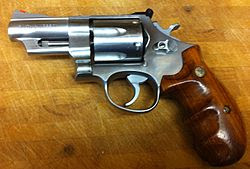
3″ S&W M 657
|
|
| Type | Revolver |
| Place of origin | United States |
| Production history | |
| Manufacturer | Smith & Wesson |
| Produced | 1964-present |
| Variants | See variants |
| Specifications | |
| Weight | 48 oz (6″ bbl) |
| Barrel length |
|
|
|
|
| Cartridge | .41 Magnum |
| Action | Double-action |
| Feed system | 6-round cylinder |
| Sights | Red insert front; adjustable rear |
The Smith & Wesson Model 57 is a large frame, double-actionrevolver
The gun was designed as a weapon for law enforcement agencies. However, due to size and recoil it found more favor with civilian target shooters and hunters.
Contents
Development
In the early 1960s, Elmer Keith, Bill Jordan, and Skeeter Skelton, all noted firearms authorities and authors, lobbied Remington Armsand Smith & Wesson to introduce a new .41 caliber police cartridge with the objective of filling a perceived ballistic
In April 1964 Remington responded by introducing the .41 Magnum cartridge, and in concert, Smith & Wesson launched the Model 57 revolver chambered for the new ammunition.[1] Elmer Keith originally proposed the name “.41 Police” for the new cartridge, but Remington instead chose .41 Magnum, hoping to capitalize on the notoriety and popularity of its earlier Magnum offerings.[1]
Features
First introduced in April 1964, the Model 57 was produced with 4″, 6″, 6-1/2″, and 8-3/8″ barrels in both highly polished blued and nicke
Using the S&W large “N” frame, the Model 57 was one of the companies’ premier products, offering superb fit and finish, basically the same pistol as the famous S&W Model 29, except in .41 instead of .44 caliber.[2]
Like the Model 29, the 57 sported a red insert front sight with a white outline adjustable rear iron open sight, as well as a target trigger, target hammer, and oversized wooden target grips.[2]
Ammunition
Remington originally offered two ammunition loadings in its .41 Magnum cartridge lineup. The first was a full-power 1300-1400 ft/s hunting or heavy-usage load using a jacketed soft point bullet which rivaled the stopping power of the mighty .44 Magnum while boasting less recoil and a flatter bullet trajectory.
The second loading was a less powerful 1,150 ft/s 210 grain lead semiwadcutter
Market response
Due to a number of factors the .41 Magnum unfortunately never became the “next great police loading” that its developers and supporters envisioned.[1]
First, the majority of departments and rank and file officers were perfectly content with their traditional .38 Special revolvers, and if more stopping power was needed, cartridges such as the popular .357 Magnum were available.[2]
In addition, when senior police officials could be convinced to evaluate the .41 Magnum, many complained that even the lighter .41 magnum “Police load” was unpleasant to fire, while the .357 Magnum offered adequate performance without the bruising recoil and muzzle blast associated with the .41.[1][3]
Also, the marketing decision by S&W and Remington to dub the cartridge a “Magnum” ended up working against them in their desire to address the law enforcement market. Police organizations found the connotation of a hi-powered “Magnum” hunting-type weapon to be unpalatable in an era when they were struggling with political correctness and pursued positive public relations to offset any possible public perception of police brutality.[4]
Although the .41 Magnum was adopted as a police departmental standard by a few cities such as Amarillo and San Antonio TX, and San Francisco CA most chose to pass.[1]
In addition, introduced in the shadow of its limelight-grabbing ‘big brother’ the .44 Magnum Model 29, the Model 57 struggled from its onset to garner much market share. This gap widened further when Clint Eastwood used a “Most powerful hangun in the world” Model 29 in the popular film Dirty Harry.
In the aftermath of the film’s release, many contemporaries of the .44 Magnum, including the .41, somewhat fell out of favor with the general public and American firearms market.[2]
Finally, a series of hugely popular and successful lighter and smaller-framed revolvers crafted from stainless steel emerged in the mid 1980s.
These police-issue oriented firearms, exemplified by models such as the S&W Model 66, accelerated the Model 57’s demise. Overall, the Model 57 and its variants failed to generate the interest (or sales) which had been hoped for.[1]
Variants
Smith & Wesson offered an all stainless steel version of the Model 57 as the Model 657.[5] The Model 657 was introduced in 1986.[6]
A very rare 5″ model 57 was[7] produced in the custom shop. All known examples included the traditional short underlug/ejector shroud.
Smith & Wesson Model 58
On July 10, 1964, S&W introduced a more basic and inexpensive .41 Magnum intended for procurement by police departments.
This budget version of the Model 57 was similar in principle of design to the .38 Special S&W heavy-barrel Model 10, or .357 Magnum Model 28 Highway Patrolman.
Weighing in at 41 ounces, the Model 58 featured a 4″ barrel, fixed iron open sights, and simpler standard “magna service” grips.[1][3]
Finish options were the same as its upscale Model 57 brethren, blued and nickel, but shortly after the Model 58’s introduction S&W decided a less expensive “matte” bluing treatment would be more appropriate for the basic “workingman” model.
The no-frills Model 58 also lacked an ejection rod shroud, but retained the pinned barrel and counter bored cylinder of the more expensive Model 57.
The Model 58 was manufactured from 1964 to 1977 and roughly 20,000 were produced. In 2008, it was released again by S&W, both in bright nickel and bright blue finish.[3]
References
- ^ Jump up to:a b c d e f g h i “Smith & Wesson’s .41 Magnum” Archived 2008-08-20 at the Wayback Machine., Free Patriot Web site. Accessed August 5, 2008.
- ^ Jump up to:a b c d “S&W Model 57”, Notpurfect Web site. Accessed August 5, 2008.
- ^ Jump up to:a b c d Miller, Payton. “Smith & Wesson Model 58”, Guns and Ammo magazine Web site. Accessed August 5, 2008.
- Jump up^ ”The .41 Mag: if only we could do it over”, Guns magazine April, 2005. Guns magazine Web site. Accessed August 5, 2008.
- Jump up^ Boorman, Dean K. (2002). The History of Smith & Wesson Firearms. Globe Pequot Press. p. 86. ISBN 978-1-58574-721-4. Retrieved 31 July 2013.
- Jump up^ Supica, Jim; Nahas, Richard (2006). Standard Catalog of Smith & Wesson. Iola, Wisconsin: Gun Digest Books. p. 268. ISBN 978-1-4402-2700-4
. Retrieved 31 July 2013. - Jump up^ 44, Doc. “Model 57, Rare 5-inch Barrel, A “Tool Room” Job”. The Smith & Wesson Forum. http://smith-
wessonforum.com/. External link in |publisher=(help)